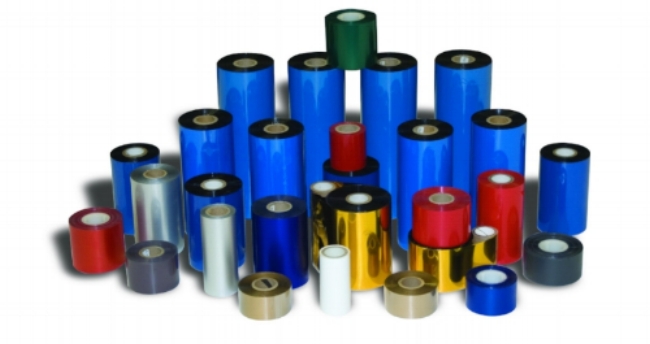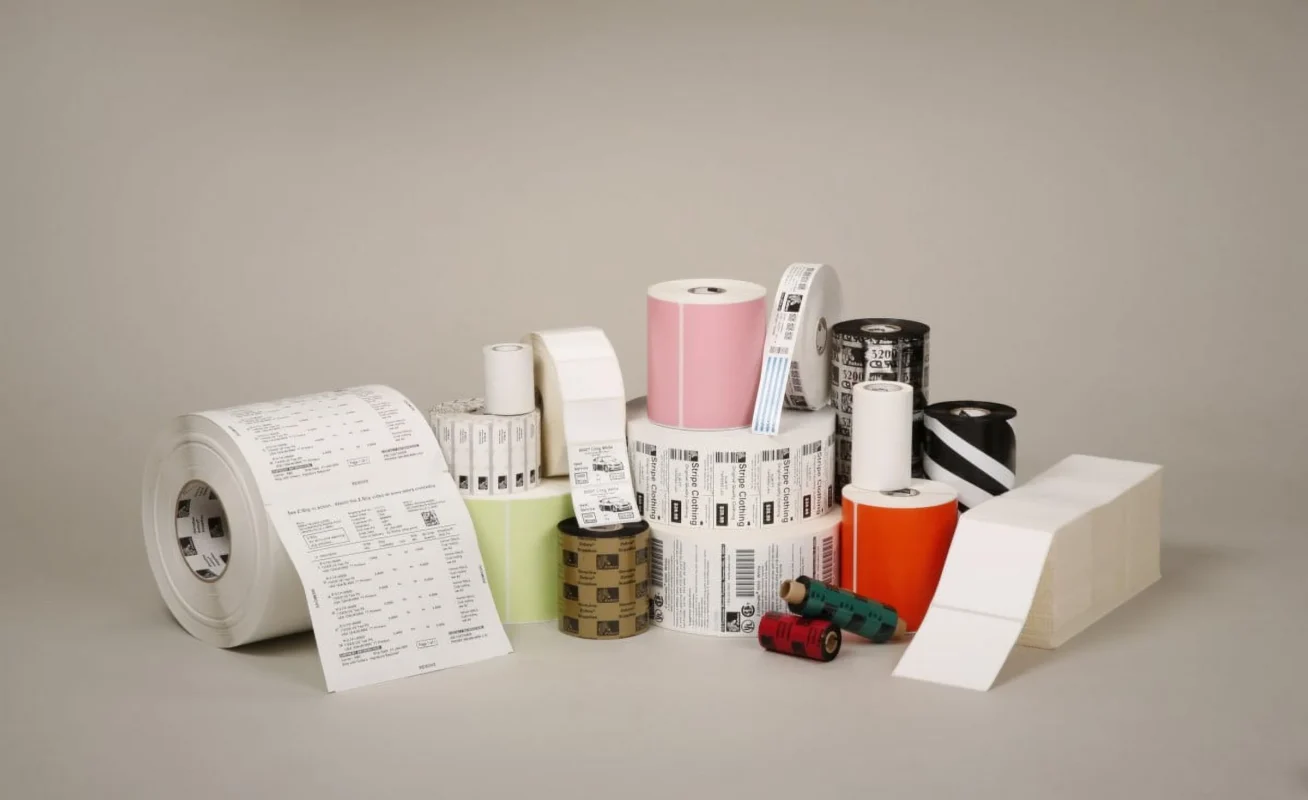Blog
What Are Small Printable Labels and How Are They Used in Commercial Labeling?
Small printable labels provide an ideal solution for industries needing high-volume identification within tight spaces where precision is essential. Mini labels serve as critical elements in various industries including electronics and pharmaceuticals as well as cosmetics and food packaging because they ensure clear and long-lasting markings on compact surfaces.
Distributors, resellers, and sourcing professionals need to master the specifications and procurement strategies for small printable labels to align with industrial customers’ rapidly changing needs.
This article covers everything you need to know about small printable labels: This article explains small printable labels through their definition and practical applications and highlights printer compatibility and customization possibilities together with bulk ordering strategies for B2B operations.
What Are Small Printable Labels?
Small printable labels function as compact adhesive labels which allow for customization through inkjet, laser, direct thermal, or thermal transfer printing methods. Small printable labels measure less than 2 inches across both width and height which makes them perfect for labeling needs.
- Small packaging
- Product components
- Bottles, vials, and tubes
- Cables and wires
- Jewelry and cosmetics
Both rolls and sheets formats exist for these labels which incorporate materials such as paper or synthetic films along with specialty substrates to match the required durability and application standards.
Core Features of Small Printable Labels
1. Miniature Dimensions
- Common sizes: 10x10mm, 25x15mm, 38x21mm, 1″x0.5″
- These labels can undergo custom die-cutting to fit challenging labeling spaces.
2. Print-On-Demand Capability
- Enables printing of variable data including serial numbers and QR codes along with batch codes.
- Ideal for dynamic inventory or regulated industries
3. Compatible With All Major Printers
- Inkjet, laser, direct thermal, thermal transfer
4. Available in Multiple Formats
- Die-cut labels on rolls (for automated application)
- Sheet labels (for office use)
- Continuous mini strips (for industrial flexibility)
This section details small printable label types based on their printing technology.
Inkjet Small Labels
- Compatible with pigment or dye inks
- Suitable for colorful branding
Laser Printable Small Labels
- Heat-resistant materials
- Best for text and barcode clarity
Direct Thermal Small Labels
- No ribbon required
- Ideal for short-term product tracking
Thermal Transfer Small Labels
- Long-lasting prints for outdoor or industrial conditions
- Works with wax, wax-resin, or resin ribbons
Industrial Applications of Small Printable Labels
1. Electronics Manufacturing
- PCB and component ID
- Static-sensitive product labeling
2. Medical and Pharmaceutical
- Vial, syringe, and pill bottle labeling
- Lab sample tracking
3. Cosmetics and Personal Care
- Lipstick, mascara, and sample container labels
- Clear or ultra-gloss film for elegant finishes
4. Retail and Apparel
- Price tags for jewelry and accessories
- Size, care instruction, and SKU labels
5. Logistics and Warehousing
- Return tags on small parcels
- Mini barcode or QR code tracking
6. Food and Beverage
- Bottle neck labels
- Small container ingredients/nutrition labels

Materials Used for Small Printable Labels
| Material | Use Case |
|---|---|
| Coated Paper | General retail and office labeling |
| Polypropylene | Water- and oil-resistant food packaging |
| Polyester (PET) | Harsh environment, long-term tracking |
| Vinyl | Flexible surfaces, curved bottles |
| Clear Film | Branding and cosmetics without visual clutter |
Common Sizes and Shapes
- Square: 10x10mm, 15x15mm
- Rectangular: 25x10mm, 30x20mm, 38x21mm
- Round: Diameter 10mm, 15mm, 20mm
- Custom shapes can be produced on request
Select the appropriate small label to suit your printer requirements.
Step 1: Identify Printer Type
- Use inkjet sheets for color-intensive designs
- Use thermal rolls for automated production lines
Step 2: Confirm Material Compatibility
- Choose paper for cost-effective applications
- Opt for film or synthetic materials when durability or resistance against moisture and chemicals is required.
Step 3: Determine Application Needs
- Permanent or removable adhesive?
- The label must be designed for curved surfaces or flat surfaces?
Step 4: Review Roll/Core Specs
- Industrial printers: 3” core, 8” OD
- Desktop printers: 1” core, 5” OD
Customization Options
- Custom die-cutting enables labels to precisely fit product shapes or meet branding requirements.
- Pre-printed elements consist of options such as logos, color blocks, or static designs.
- Adhesive options: Removable, permanent, high-tack, freezer-grade
- Laminated finish: Gloss, matte, or writable coatings
- The label includes a back slit or perforation that allows for both manual removal and machine-dispensed functionality.
Bulk Ordering Small Printable Labels
1. Define Quantity and Size Range
- The minimum order quantity ranges from 1,000 up to 10,000 rolls or sheets.
2. Request Compatibility Testing
- Test different labels to confirm they work with the correct printer model and ribbon type.
3. Look for Private Label Options
- Offer under your brand with neutral packaging
4. Ensure Compliance Certifications
- RoHS, REACH, FDA (food packaging), ISO 9001
5. Optimize for Storage and Shipping
- Small labels in large volume = compact storage
- Inquire about the availability of stacked coreless rolls when dense packaging solutions are needed.
Conclusion
Although small printable labels take up minimal space they deliver significant benefits in terms of organization and branding while ensuring compliance standards. Different sectors make use of these systems to achieve fast product identification while maintaining clear details throughout their processes.
For any labeling needs in vials, wires, cosmetics or components selection of compatible printing materials along with suitable adhesives and formats is fundamental to ensure downstream success.
📩 sales@foyottr.com
📞 Tel: +86-592-6018318
🌐 https://foyottr.com
👉 Contact Us Now to request small printable label samples or bulk pricing.
FAQs
Can I print small labels with a regular desktop printer?
Yes, if using sheet-format labels compatible with laser or inkjet printers. Ensure your printer supports the selected size.
Do small labels work with thermal transfer printers?
Absolutely. Choose the correct core size and ensure the printhead resolution supports small font printing.
What’s the smallest label size I can order?
Most suppliers offer custom sizes starting from 10mm x 10mm.
Are small labels available in clear or transparent materials?
Yes. Clear film and PET materials are ideal for cosmetics or branding with minimal visual intrusion.
What’s the shelf life of small label rolls?
Typically 12 to 24 months when stored in cool, dry, and UV-protected environments.

